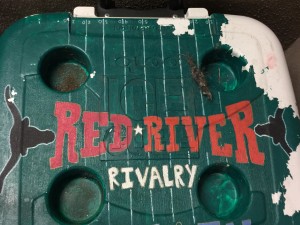
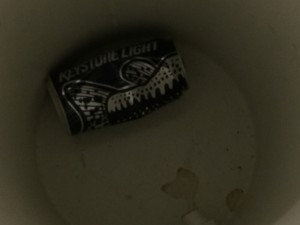
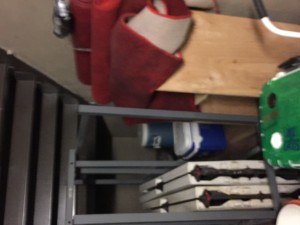
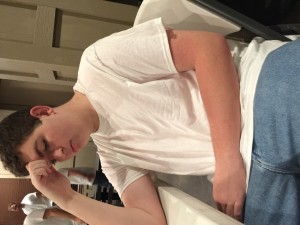
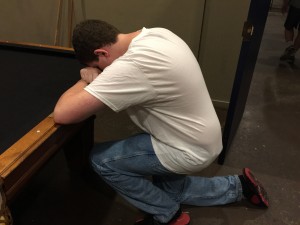 This series of images is called “Post-TX/OU” because it shows a made up series of events after Texas lost this year. This story shows my friend opening his decorated cooler post-game, getting drunk, and sulking while thinking about the game. The third picture shows his view when he looks up, and I purposely made it blurry cause he’s drunk. I’m extremely happy with the images and the story they tell. One thing I don’t like is the fact that he was supposed to be laying down (passed out) on the floor in the last picture, but he didn’t want to get his shirt dirty. If I could do it again I would’ve had a friend actually lay on the floor for the last picture.
This series of images is called “Post-TX/OU” because it shows a made up series of events after Texas lost this year. This story shows my friend opening his decorated cooler post-game, getting drunk, and sulking while thinking about the game. The third picture shows his view when he looks up, and I purposely made it blurry cause he’s drunk. I’m extremely happy with the images and the story they tell. One thing I don’t like is the fact that he was supposed to be laying down (passed out) on the floor in the last picture, but he didn’t want to get his shirt dirty. If I could do it again I would’ve had a friend actually lay on the floor for the last picture.
Month: October 2016
Thematic Photographs
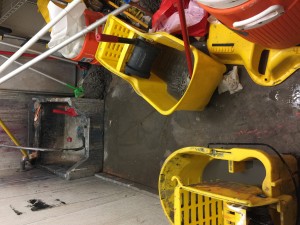
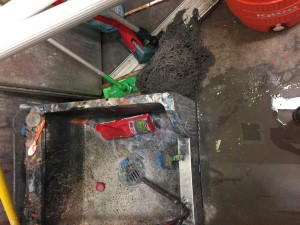
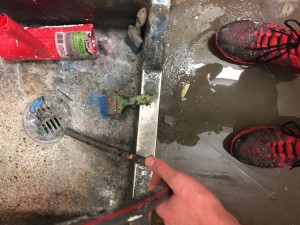
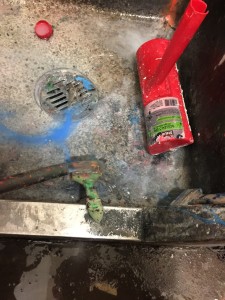
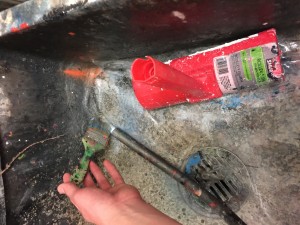 My thematic series of pictures is titled “Election 2016” because of what the pictures represent. The concept is that the election is dirty and cluttered. The first picture shows some dirty mop buckets. The pictures show me getting closer and cleaning. After I get involved, I get dirty (my shoes). The series ends with a picture of a toilet, symbolizing the election as a whole. I wish my reflection wasn’t in some of the pictures. I am happy with the images, though. I think it’s cool how they don’t make the theme obvious without it being explained. If a viewer is only given the title of the series, they would think of cool explanations, as well. If I did it again I would use different places to symbolize the dirt and clutter of this election. THE WEBSITE IS ONLY LETTING ME PUT 5 OF THE 7 PHOTOS ON. I’LL SHOW YOU THE OTHER 2 PICTURES IN PERSON.
My thematic series of pictures is titled “Election 2016” because of what the pictures represent. The concept is that the election is dirty and cluttered. The first picture shows some dirty mop buckets. The pictures show me getting closer and cleaning. After I get involved, I get dirty (my shoes). The series ends with a picture of a toilet, symbolizing the election as a whole. I wish my reflection wasn’t in some of the pictures. I am happy with the images, though. I think it’s cool how they don’t make the theme obvious without it being explained. If a viewer is only given the title of the series, they would think of cool explanations, as well. If I did it again I would use different places to symbolize the dirt and clutter of this election. THE WEBSITE IS ONLY LETTING ME PUT 5 OF THE 7 PHOTOS ON. I’LL SHOW YOU THE OTHER 2 PICTURES IN PERSON.
The Problem with Photography
Dr. Kennedy’s talk was awesome. It was extremely interesting and thought-provoking. I’m in his class, The Problem with Photography, and I love it. I thought that he was the best speaker so far. He says that photography is a wicked problem in a multitude of ways. One way is in the fact that a photography does not always tell the whole story. A photograph also doesn’t tell the truth. They can be edited or changed, as well. Some photographs can be staged to look like something they’re not. Additionally, the photographer can struggle to create the exact image he wants. I was surprised by the fact that he will sometimes spend days doing an entire set of photographs that all have one theme or message, and then he’ll just throw them away if he isn’t satisfied with the results. It was also crazy how he was able to take something as simple as a “meat-beater” (he said that, I don’t know what it’s actually called) and turn it into a crazy image of weird shapes and colors. This shows the power of photography, and how powerful the affect on someone’s perspective of something can be. He was also able to take simple pictures of running water and turn them into colorful swirls and dots.
Transportation
This week, we explored the background of our problem in Austin. I created my visual representation to help make sense of the system we are exploring. Here is an explanation of what I created: Our Austin-based problem is transportation. Currently, the problem we are investigating is the broad topic of transportation. We may decide to focus on one part of this issue, however. I made my visual representation in the form of a web. My web has a circle in the middle that’s called “minor traffic accident.” From this center point, I made six surrounding circles that contained more specific issues that this one major issue could cause. I then made more circles that branched off of these secondary ones. Finally, I made lines that connected the circles on the outside to each other where applicable. We are going to use methods like this to narrow in on specific problems within our broad topic, and we will then examine these specific portion of the issue to look for possible causes and solutions. Additionally, we will work individually to research specific problems relating to transportation, and then we’ll combine our research to create a final project.